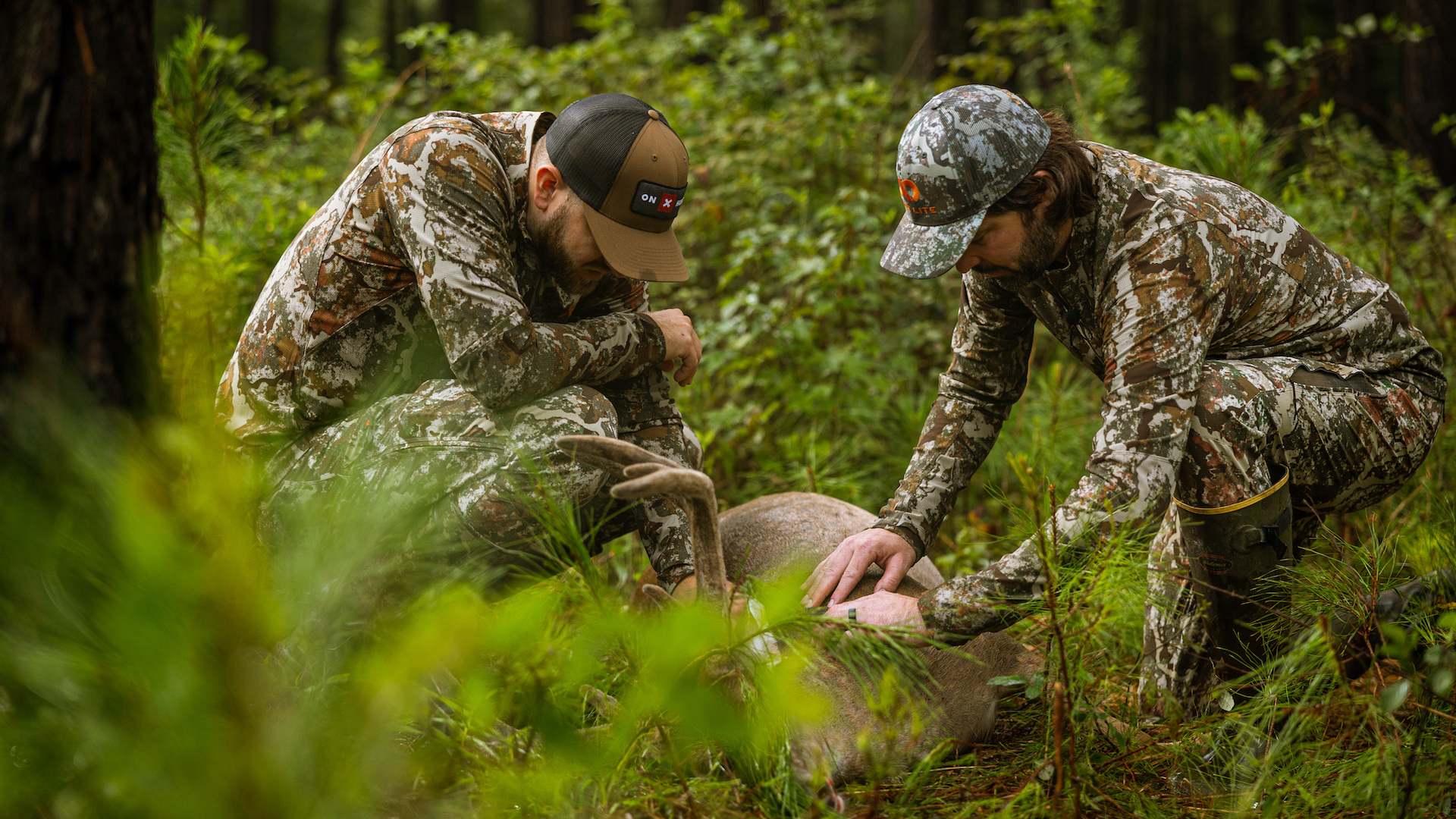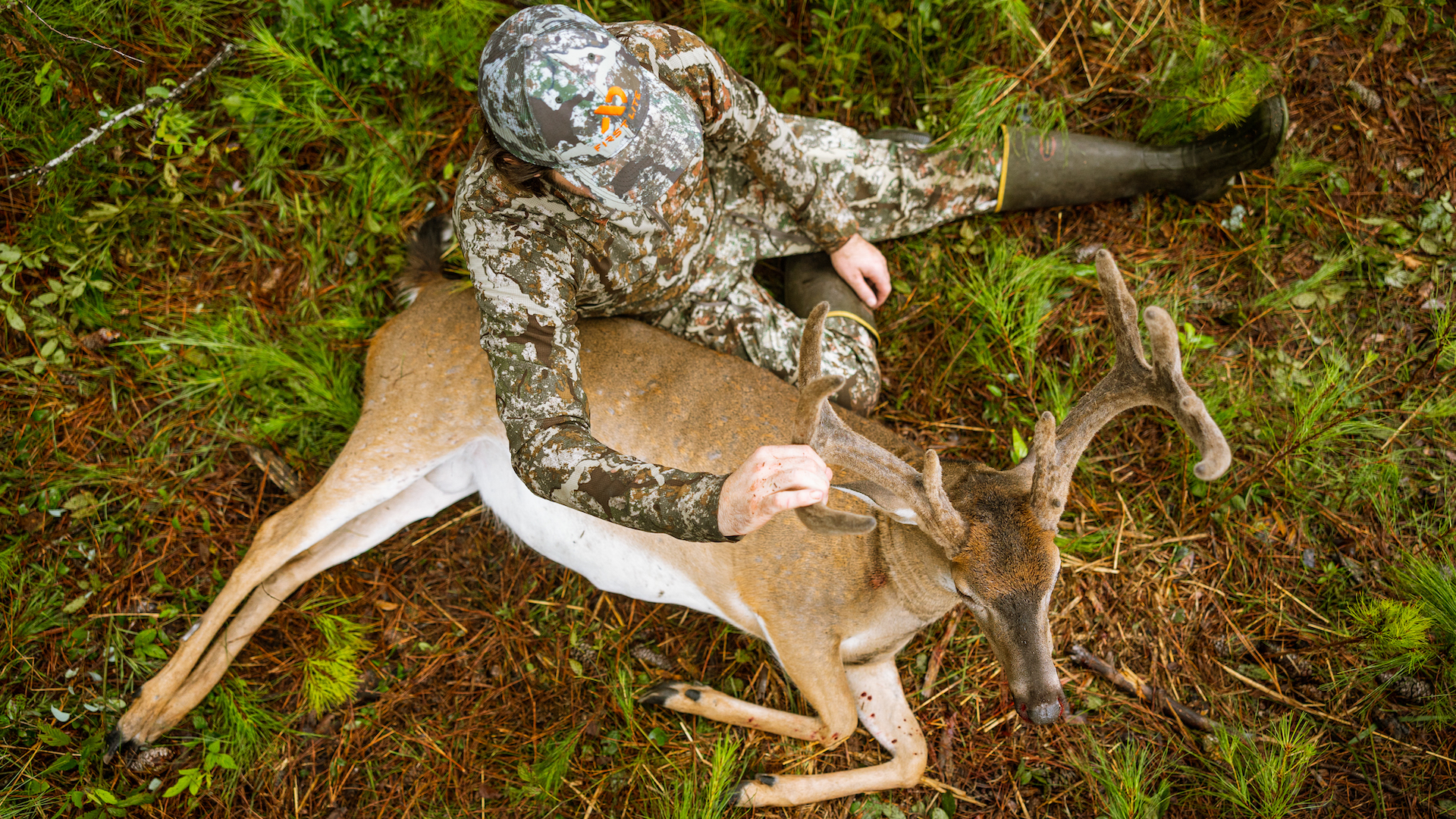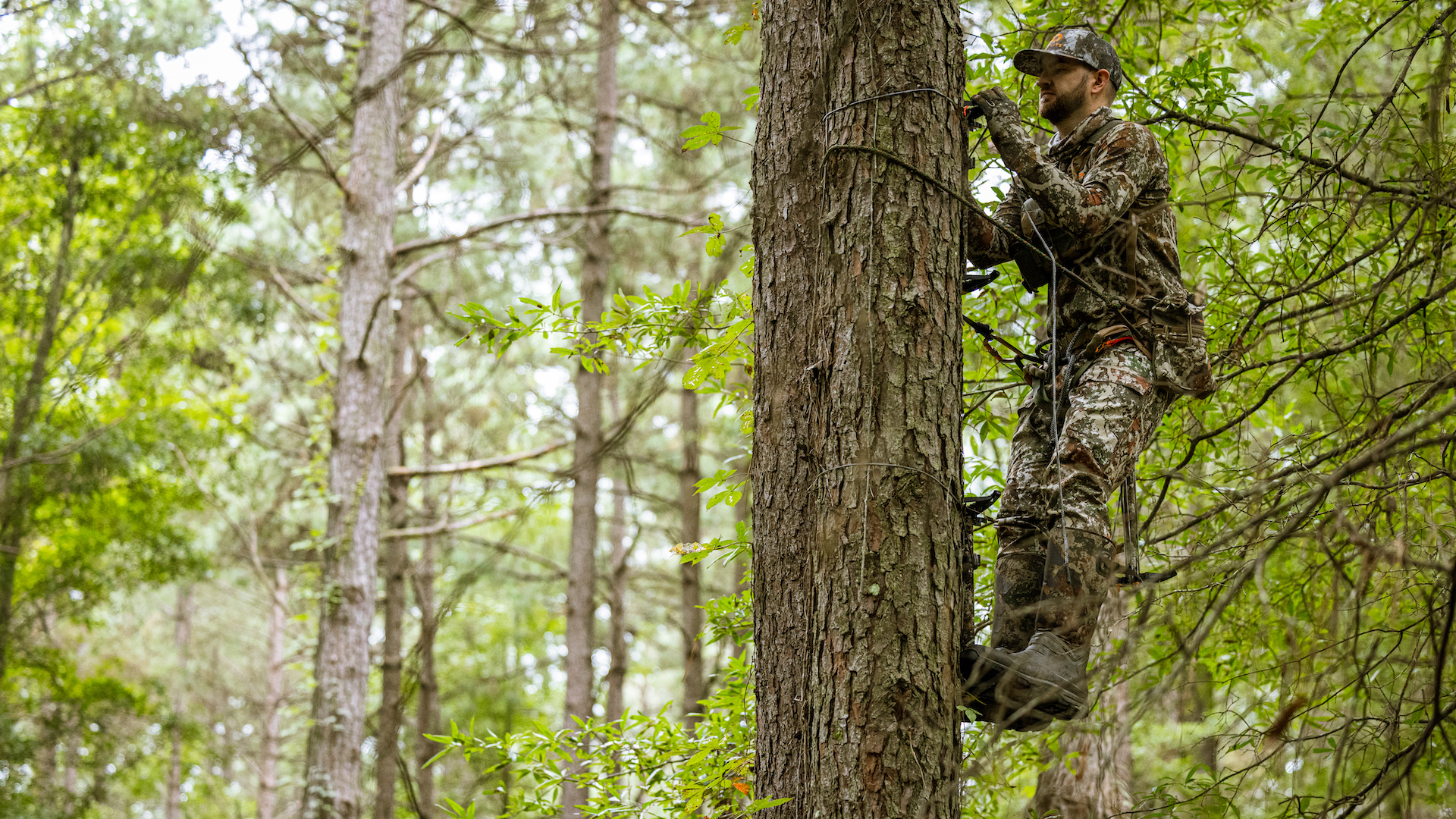
Mosquitoes, 90-plus-degree temperatures, and humidity so thick you can cut it with a knife—those add up to my kind of whitetail pursuit. Why? Because it’s a challenge to mentally and physically prepare yourself for the early season in the South.
Season openers across the South range from July to September. This time of year comes with a high chance of being uncomfortable, which is why it’s crucial to give yourself an advantage. Many hunters wait for cooler temperatures before they head to the woods, but I’ve never understood that way of thinking. Deer don’t wait for cooler temperatures to move, socialize, or engage in pre-rut or breeding. So, why should you?

Early-Season Whitetail Behavior
It’s been proven that moon phases and temperature do not drastically affect whitetail movement. Just ask any Southern deer manager or check out research that backs it up. Whitetails are crepuscular, meaning they primarily move at dusk and dawn, and Matt Ross of the National Deer Association covers this topic in great detail. I can back up his research with my own personal research over the past 17 years. The best time to hunt is whenever you can. The best place to hunt is where deer will be based on seasonal behavior.
Every day, deer need to eat 6 to 8% of their body weight to maintain optimal health. That’s roughly 10 to 14 pounds per day for a 180-pound buck. Because of their need to consume high quantities, deer feed throughout the day and will routinely move during the middle of summer days and well before sunset on the hottest days. Furthermore, breeding activities are not curbed due to high temperatures (unlike what many hunters claim). Generally, it’s the hunter who’s uncomfortable, not the prey.
I primarily hunt at my family farm south in southwestern South Carolina. Our season runs from August 15 to January 1, which is a period that encompasses a wide range of weather conditions. Heat is a major factor through October, but can also be a factor well into December. Success in the South comes from understanding whitetail biology and hunting the appropriate locations during the appropriate time, regardless of weather conditions. By using this strategy, I manage to routinely kill early-season bucks, including several mature bucks in August and September.

Early-Season Whitetail Clothing Kit
Last August, I had the opportunity to try out First Lite’s new early-season Trace System. What I love about the design is its breathability and its capability to ventilate as needed—which happens to be quite often during muggy mornings and sweltering afternoons. To me, vents are a necessity. Your body temperature will rise significantly when walking into the woods with a mobile hunting setup, regardless of the time of day. And where I’m hunting, humidity and heat are consistent factors throughout the day.
The Trace System’s ventilation allowed me to regulate sweat and overall comfort. This proved to be an invaluable feature the morning I killed a five-year-old buck slipping back to his bedding site 45 minutes after first light. An isolated rain shower was dumping buckets before dawn and didn’t let up until just before I sighted the deer. Ventilation allowed me to stay both cool and dry during my sit, which led to my largest full-velvet buck to date.
Durability is another superior feature of the Trace System. The KineticGrid fabric promotes breathability while also providing a tough shield against dense understory growth, insects, and sun. It held up nicely while dragging out the same buck through thick, four-foot sawtooth blackberry bushes.

Additional Gear Considerations
In order to reduce weight, I remove any unnecessary items from my early-season gear. For example, when Thermacell mosquito repellent hit the market in the late 1990s, the ability to shift from “bug suits” and heavy DEET spray to a simple Thermacell was a game changer.
I also wear uninsulated rubber boots for most of the year, primarily for scent control. I find snake-proof boots to be very hot and uncomfortable because they don’t breathe. And, while rubber isn’t known for its breathability, I wear my boots a tad loose to boost airflow. I prefer solid, waterproof boots to keep morning dew off of my feet.
As for my whitetail gear bag, I carry a single-strap waist “fanny pack” prior to breeding season with water, a Thermacell, a range finder, binoculars, a headlamp, and of course, Little Debbies, a Southern delicacy. I don’t use a chest strap for my binoculars, so I can keep my shirt loose and flowing—the same reason why I don’t use a full backpack until temperatures start to drop.
Ultimately, scent control is the number one factor to consider when planning an early-season whitetail hunt. You will sweat, and it will be impossible to eliminate human scent. However, you can combat perspiration and comfort with high-performance gear. Deer move during hot and nasty days. Do you want to wait until every hunter hits the woods after the first cold front, or would you rather fill your tag loaded with early-season, edible fat? The latter is my choice, and the Trace System, along with a strategy packing plan, is how I’ll get it done come August.
Want to learn more about early-season whitetail hunting and the gear to use for warm-weather pursuits? Check out these videos that dive into the nitty gritty of the Trace System, and be sure to read How to Care for Venison in Hot Weather and How to Kill an Early-Season Buck in the Morning.






Conversation